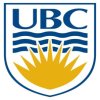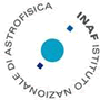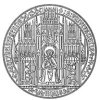This page provides information about the DUEL network and its scientific objectives.
Aims
The aims of DUEL are to exploit imminent, large-scale imaging and multi-wavelength galaxy surveys and prepare for future gravitational lensing surveys. The analysis of these surveys will map out the 3-dimensional distribution of Dark Matter over a large volume of the observable Universe, using gravitational lensing of distant galaxy images and photometric redshifts. Using these maps we intend to study the growth of Dark Matter clustering with time, constrain the nature of the mysterious Dark Energy which dominates the energy-density of the Universe, and probe the Dark Matter haloes galaxies are embedded in.
Overview
The DUEL Network will study the growth of structure using weak gravitational lensing, a technique that has been in development since the 1990s. It involves measuring shapes of galaxies very accurately, and deducing coherent distortion patterns from these: they are the signature of gravitational fields along the line of sight. It is possible to disentangle the distortion pattern and deduce the distribution of the (mostly dark) matter responsible for them. By mapping out the evolution of the distribution pattern with distance to the source galaxies, we can trace the growth of structure, and this is the fundamental diagnostic we are targeting. We will then address several major cosmological questions that can be explored with weak lensing information: the properties and evolution of dark energy in the universe, the properties of dark matter distribution and its relation with the inflation period that occurred during the very early stage of the universe the universe, and the relations between luminous and dark matter and its relation with galaxy formation processes.
In order to study weak lensing, we are participating in and will analyse three large astronomical surveys that are being conducted specifically for this application: the Canada-France-Hawaii Telescope Legacy Survey (CFHTLS), the VLT-Survey Telescope Kilo-degree Survey (VST-KIDS), and the Panoramic Survey Telescope and Rapid Response System (Pan-STARRS; PS1). These are huge projects, with very large data handling requirements, and delicate calibration procedures. DUEL contains participants in these surveys, and by sharing and comparing our analyses procedures, and developing new ones, we will put the results from these surveys on a firm footing. The interpretation of the measurements requires a comparison with theory, in particular simulations of the way light rays are bent as they traverse the universe while structure grows around them. Such simulations will also be developed and run by the DUEL network.
The Network will be appointing 7 PhD students and 7 Postdoctoral Fellows in the next few years, who will each specialize in one of these aspects, while at the same time acquiring a working knowledge of the other facets of the project. As a result, they should be well-trained to be a part of future generations of similar surveys, using facilities on earth and in space that are now on the drawing board.







